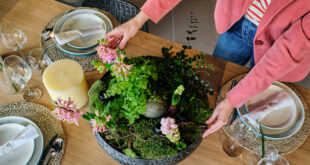Rose breeding is skill that fascinates many of us, but one which seems so exotic and far removed from our every day gardening activities that we tend to keep well away from it and leave it to the experts. What few people realise, however, is that roses are more than happy to germinate for you from seed, and that every seed you sow will produce a unique rose – which you can then name!
That right! Just as with apple seed, each seed produced by a rose is not a duplicate copy of its parent, but an entirely new plant. What makes rose breeding so exciting is that you never know, until the first flower appears on your new plant (and a flower will appear the first year after sowing!) what colour it will be, and whether or not it will have a perfume. You also won’t know, until your plant develops in the coming 2-3 years, how resistant it will be to disease, or how well it will perform in other ways. Some of the best roses are chosen not only for perfume and disease resistance, but also for fullness of petal, how quickly the dead blooms drop off, leaf colour, and overall plant shape. Rose breeders sow hundreds, sometimes thousands, of seed each year and then ‘select’ on the basis of strengths and shortcomings. For each rose released onto the market, hundreds of seedlings will have been tossed into the compost.
To start breeding roses, all you have to do is stop completely deadheading your own rose bushes in late summer. Leave a few hips on each bush to mature, and when they have turned rusty red or orange, snip them off and bring them inside. If you are collecting from more than one bush, keep the hips in separate piles to distinguish which parent they come from. Slit the hips open with your finger nail or a small vegetable knife, and take out the seeds. Place them in a sieve and wash off any pulp that adheres to them. Dry the seeds on a paper towel.
Fill containers with seed raising mix, ensuring there is a drainage hole in the bottom of each, and sow your rose seed into them. Seed should be covered with no more than 1cm of mix. Be sure to label the seed with the name of the parent plant it was taken from. Water the seed lightly, scatter over some slug and snail bait, and leave the seed outdoors, over winter, to germinate (exposing the seed to the elements duplicates that natural setting in which the seed would find itself should it fall from the bush into your garden).
In late winter to early spring, the seed will germinate. The first sign will be two small leaves that do not look as if they bear any resemblance to a rose. These will soon give way to two rose-like leaves. Keep the young plants protected from slugs and snails but don’t be tempted to bring them indoors unless there is a severe cold snap. Flowers should appear on your rose seedling over the summer period (sometimes just 5-6 weeks from germination). When that first bud opens, give your new rose bush a treasured name. Transplant the seedlings you wish to keep by planting each in an individual container of rose mix. After 2-3 years, the plant is ready to go into the garden.
Growing a rose from seed, and naming it for a friend, can make a perfect gift!








Join the Discussion
Type out your comment here:
You must be logged in to post a comment.